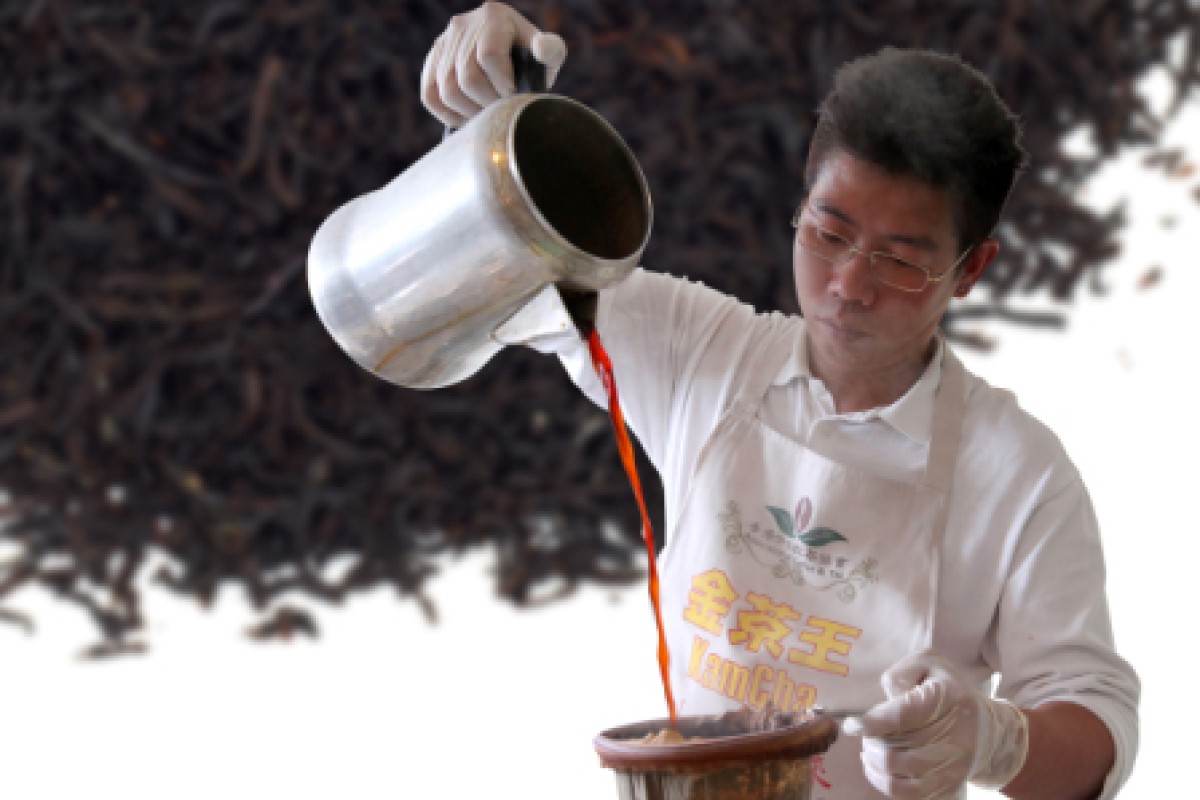
Here is how it's done: A mixture of different tea leaves are filtered through a sackcloth bag which looks like a pantyhose. Hence the beverage's nickname: "silk stocking milk tea."
But making a truly tasty cup of milk tea is not that easy. Just ask tea guru Joe Chan Wai-chung.
In 2009, Chan won the city's first Kam Cha Competition, which pits the best brewing experts of authentic milk tea against one another. The event promotes local food culture.
It has since become a popular annual event supported by the Hong Kong Tourism Board and co-organised by the Association of Coffee and Tea of Hong Kong and Kampery Development Limited.
It took Chan, now 38, long years of study and practice to master the art of brewing. "You need to know your tea, know the water temperature and water type," he says.
The tea maker's fame has landed him a job in Hotel Lan Kwai Fong, Macau. An apprentice of his from the hotel won the championship last year, while another finished second.
"Like wine, different tea leaves give different tastes and aftertastes," the master notes. "You have to try them many times to see which of them blend well together."
Mixing different kinds of tea gives a richer depth to the taste, he adds. He likes to mix three kinds of tea leaves: Broken Orange Pekoe, Broken Orange Pekoe Fannings and Dust, all from Sri Lanka. "The mixture releases a unique fragrance popular with Hong Kong people," he says.
Other tea leaves he recommends for making a fine brew of milk tea are Puer () and Liuan () tea.
"The water should first be boiled before it is left to cool down to 96 to 98 degrees Celsius," he explains. "Soft water is better than hard water."
Despite its fame as a native Hong Kong beverage, this national drink has foreign origins.
Milk tea was invented in colonial times by the British, who poured milk and sugar into black tea. The drink soon grew popular in Hong Kong.
Chan himself learned the craft from his father who worked in a tea house. He became interested in tea making and started to read books and attend workshops. Then all it took was practice - lots of it.
The traditional way of brewing milk tea is literally called "crashing" in Cantonese. The technique involves pouring the tea back and forth in two tea pots before serving. "You need to pour it back and forth three times, and at the right angle at the right level," Chan says. The process, he explains, allows air to suffuse the mixture and create smoothness. "You need to have strong arms. Holding two tea pots and pouring them the whole day is pretty heavy duty," he says.
But in the end, it comes down to finding one's own unique cup of milk tea. To achieve that, Chan says, "you need to try, try and try again until you make the cup that satisfies you. That will become your signature cup".
Fine tea is like a delicacy, he adds. "You need find time to enjoy it at a place where you feel comfortable and can relax."
